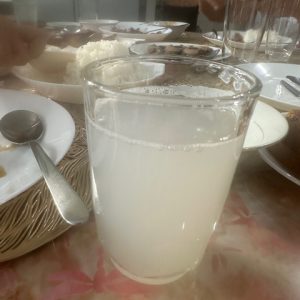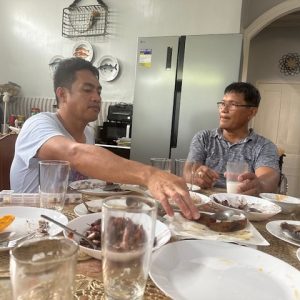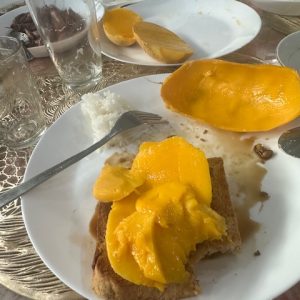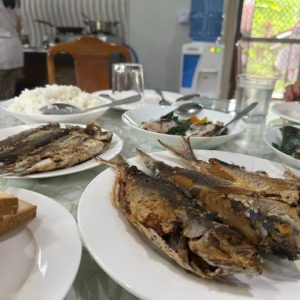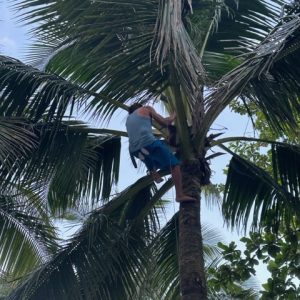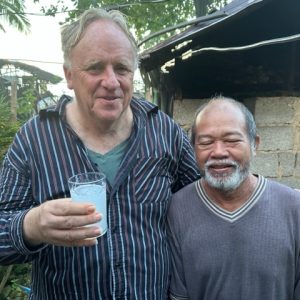Breakfast in Cansayong
In many cultures, breakfast has a specific character, and is different from other meals.
French breakfasts are based on bread – like croissants, pain au chocolat, pain au raisin or tartines of baguette. The English breakfast focuses on eggs, bacon, baked beans, maybe sausage and other stodgy stuff.
An American breakfast can be similar to the English one, but with some hash browns, pancakes and waffles thrown in. In sharp contrast, a traditional Japanese breakfast is a well-balanced meal with a base of steamed rice and miso soup, accompanied by protein and side dishes like grilled fish, eggs, fermented soybeans (natto), and pickled vegetables (tsukemono).
Most significantly, these countries typically do not repeat their breakfast menus for later meals. But in Cansayong, breakfast is barely distinguishable from meals later in the day. Left-over and freshly cooked food is served up.
This is not necessarily a bad thing, as you can usually eat some fish, meat and vegetable dishes. One highlight can be when we bought some freshly caught fish. I have a particular penchant for crisply fried mackerel.
But the highlight for me was always, “tuba”, a traditional Filipino alcoholic beverage made from fermented coconut sap. It is usually harvested at breakfast time, and we would drink it with our breakfast. This coconut wine is a little sweet and tangy.
I was assured that the alcohol content was low. And according to the research of my sister-in-law (a micro-biologist) tuba is bursting with vitamins and other good things. Tuba has been historically important for both social and religious reasons.
Tuba does not travel well, so I cannot share it with my Aussie friends. But tuba can be aged when it becomes “bahalina tuba”. The ageing process gives it a deep brown-orange colour, a slightly bitter, astringent taste, and makes it a form of aged coconut wine. The distinct colour and natural preservation are attributed to the addition of tungog, a mangrove tree bark.
The Philippines is of course a country with customs and norms. But it is also to some extent a country where anything goes. Thus, it was deemed perfectly permissible that I make “mango toast” – meaning wholemeal wheat bread with raisins, toasted gold brown, with slices of fresh mango.
According to my dear wife, Philippine mangos are the world’s best – though she has not yet tasted Australian mangoes. Two of Australia’s favorite mangos are the Kensington Pride and Calypso varieties. Kensington Pride mangos have a strong sweet and tangy flavor with a vibrant orangey-pink skin, while Calypso mangos have a small seed with a deep orange skin.
